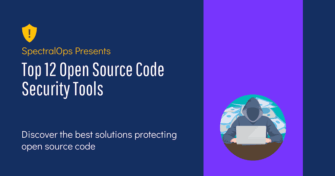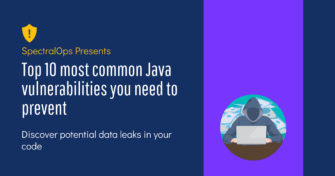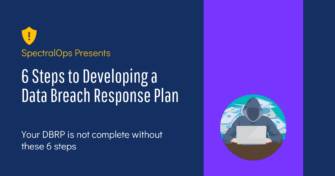Top 12 Open Source Code Security Tools
Open source software is everywhere. From your server to your fitness band. And it’s only becoming more common as over 90% of developers acknowledge using open
In February 2024, Change Healthcare, one of the biggest IT solution companies in the U.S. healthcare system, suffered from a ransomware attack resulting in a complete shutdown of their IT system. Because of this attack, hospitals and pharmacies experienced interruptions in patient treatments, as well as in payments for several weeks. This is a nightmare for any software developer, security engineer or a company.
But what if there is a way to keep your applications operational even if they are still under a cyber attack? This is the power of resilience, and this is what the Cyber Resilience Act seeks to ensure. With a 30% drop in organizations maintaining even basic cyber resilience in 2024, it is super important to adopt strategic standards right away.
It guides DevSecOps teams to create systems that would not only withstand a cyber attack but can also return to service almost immediately after being attacked.
The Cyber Resilience Act (CRA) is a new European Union Legislative Act, which has been introduced within the European Union to better protect users on the provided digital technologies. It provides a comprehensive set of basic security principles that all digital products should possess. The CRA seeks to address the issue of preventing cyber-reliant products from being overstated in terms of their reliability. As we live in a digital world full of cyber threats, the CRA along with a meticulous cyber risk assessment, ensures that both organizations and end users are secure from these attacks.
The provisions of the CRA are applicable to manufacturers, developers, and distributors within the European Union of any digital product. This comprises a large number of products such as, but not limited to, internet-connected devices, software applications, and internet-enabled services.
The Cyber Resilience Act defines cyber resilience as the ability of products or services to prepare for, withstand, and recover from cyberattacks. Rather than merely seeking to block attacks, it makes sure that systems retain functionality during an attack so that user and operational impacts are minimized wherever possible.
With the shift-left security approach, CRA requires that vulnerabilities be detected, documented, and resolved early. It helps developers to catch potential issues before they reach production or become large scale attacks. Furthermore, this early detection process will reduce the cost of fixing security issues, minimize the damage radius of an attack, and increase the reliability and the user’s trust in your organization and products.
Although the CRA is designed to improve application security, compliance can come with challenges, and misunderstandings. Here are some of the common challenges and misconceptions of adopting CRA.
Misunderstanding whether your product is covered could lead to either over-preparation or under-preparation, leaving security gaps. For example, some developers believe that legacy systems may be exempt from CRA compliance, given their age or lack of modernization.
But, developers must carefully assess their products to avoid non-compliance since the CRA applies to any digital product or service that is sold or used within the EU, including both software and hardware.
Some developers think security testing can wait until the end of development. Developers are often used to focusing on functionality first and adding security measures later in the process. The CRA requires that security needs to be a priority throughout the entire development process, not just during the final stages.
Maintaining regular updates for software after the initial release, can be challenging for development teams, particularly those managing several products. Some developers tend to leave their products untouched after launch due to the amount of time and effort required for this process.
The CRA requires detailed, well-organized documentation that covers security practices throughout the development lifecycle. However, developers often think that basic documentation is sufficient to satisfy the CRA’s requirements, and they do not have the proper mechanism to record all the necessary information, causing penalties or compliance issues.
The Cyber Resilience Act (CRA) introduces new security standards that requires developers to follow a shift-left security approach. This covers software designing, development, testing, maintenance, and regularly updating to address any vulnerabilities that arise post-launch.
As a result, developers now need to think more about areas such as code security, vulnerability management, and incident response.
Under the CRA, developers must embed security into every line they write, as well as perform secure code reviews to identify issue from the start, Following secure coding practices (sanitizing inputs, preventing XSS and SQL injection) and regular security testing using automated tools is required to identify and fix vulnerabilities early.
There is a lot more than a single patch that fixes it all. Developers play a critical part in an active vulnerability management program that covers the whole lifecycle of the products they work on.
This includes setting up processes to detect, report, and fix issues, along with ensuring regular updates for both current and legacy software.
Developers must play an active role in responding to cyber incidents. This includes creating products with rapid incident detection capabilities, assisting with plans for incident response, and examining past breaches in order to highlight any changes that need to be enforced for the future.
There can be severe consequences of non-compliance with the CRA for both developers and the organizations they work.
To comply with the Cyber Resilience Act (CRA), developers are required to integrate security into their design practices throughout the development lifecycle.
Below is a list of practical ideas to achieve compliance and enhance security at the organization:
Automated vulnerability scanning tools should be put in place to routinely check code and third party’s dependencies for possible security weaknesses. Platforms like Spectral, Nessus or OpenVAS can help monitor for weaknesses and generate reports that developers can act on quickly.
Secure coding methods must be included in all stages of the Software Development Lifecycle (SDLC). Using the OWASP Cheat Sheet (link) and the SAMM framework, developers may efficiently handle common vulnerabilities such as injection attacks and cross-site scripting (XSS). This helps organizations to design, develop, and manage better secure software from the ground up. This includes :
SAST tools help identify vulnerabilities in the codebase early. These tools analyze the source code before deployment, ensuring that issues like insecure code patterns are caught and fixed before going live.
Conduct regular security audits to assess the effectiveness of your current security measures. Audits help identify gaps, ensuring all software and hardware products meet CRA standards.
Security should be a part of your development process from the start. Adopt DevSecOps principles by embedding security checks, vulnerability scanning, and testing into your CI/CD pipelines using tools like Bitbucket, or Jenkins. This ensures continuous integration of security into every release.
Having an established plan on how cyber incidents are likely to occur helps you to prepare yourself better. Nonetheless, this plan must encompass information about how to detect an incident, who to report it to and what to do immediately when there is one. Developers should be responsible for the maintenance of the plan and review it, if necessary, in view of new threats.
Developer-first security tools are significant in assisting developers to satisfy the requirements of Cyber Resilience Act (CRA). These tools are put in place so that developers don’t have to go out of their way to secure their work, as security is built into the process.
These tools automate important security tasks like scanning for vulnerabilities and misconfigurations. This saves developers time and ensures that security issues are caught early. For example, Spectral automatically scans for exposed secrets, API keys, and security risks in real-time, helping developers identify and fix problems before deployment.
Developer-first tools are easy to set up and use, reducing the manual work developers need to do. This allows developers to focus on building features while staying secure. Tools like Spectral provide fast, accurate scans and can be set up in minutes, giving immediate feedback on code security issues.
These tools give developers visibility into their code and configurations, allowing them to catch vulnerabilities throughout the entire development process. For example, Spectral offers real-time monitoring of sensitive data and helps developers track and fix security gaps before they become serious problems.
If you’re a DevOps manager, security engineer, or developer, you know that dealing with cyber threats is part of your daily routine. Cyber Resilience Act provides you with a set of standards that guide you to achieve a solid level of cyber resilience for your application.
For example, you need to focus on building secure code from the start, running regular vulnerability scans, and performing routine security checks. Furthermore, adding security testing into your CI/CD pipeline and having a clear incident response plan can make all the difference when an attack happens.
That’s where Spectral can help. With its automated checks and real-time scanning, Spectral makes it easy to spot and fix vulnerabilities before they become major problems. This not only helps you stay compliant but also ensures your code is strong and secure.
Want to stay ahead of security risks? Start protecting your code with Spectral today and ensure your software meets the Cyber Resilience Act.

Open source software is everywhere. From your server to your fitness band. And it’s only becoming more common as over 90% of developers acknowledge using open

It’s easy to think that our code is secure. Vulnerabilities or potential exploits are often the things we think about last. Most of the time, our

Experiencing a data breach is never pleasant. Just ask any of the hundreds of businesses that suffered a data breach in the past year, exposing billions